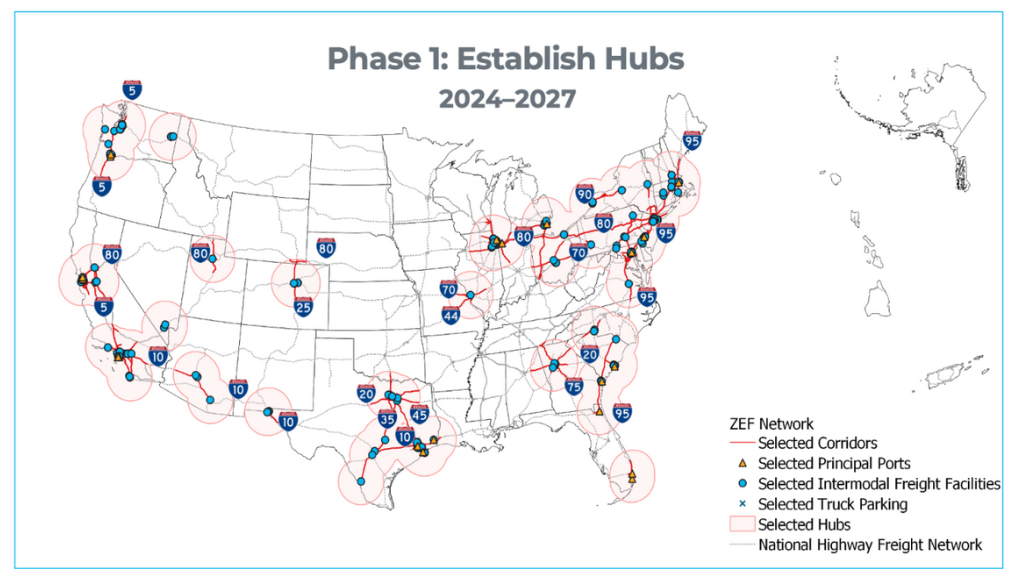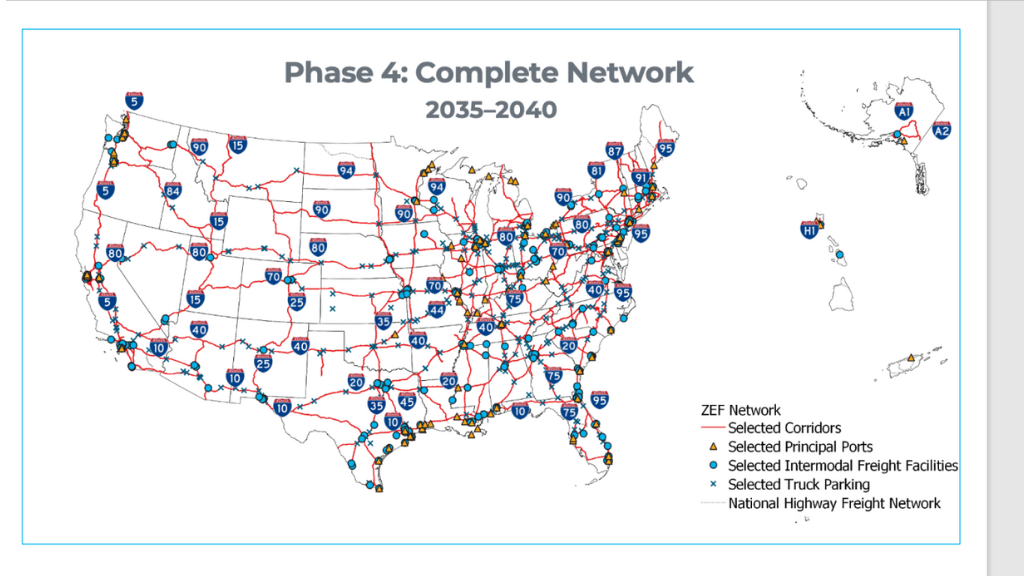US’s First-Ever National Strategy to Accelerate Deployment of Zero-Emission Infrastructure for Freight Trucks
The US Administration today released the National Zero-Emission Freight Corridor Strategy. Developed by the Joint Office of Energy and Transportation and U.S. Department of Energy (DOE), in collaboration with the Department of Transportation (DOT) and the Environmental Protection Agency (EPA), the Strategy will guide the deployment of zero-emission medium- and heavy-duty vehicle (ZE-MHDV) charging and hydrogen fueling infrastructure from 2024 to 2040. The Strategy is designed to meet growing market demands by targeting public investment to amplify private sector momentum, focus utility and regulatory energy planning, align industry activity, and improve air quality in local communities heavily impacted by diesel emissions.
“This is a big move to deliver environmental justice – 75% of heavy truck traffic travels on just 4% of our nation’s roads, jeopardizing the health of our most vulnerable communities,” said President Biden’s National Climate Advisor Ali Zaidi.
Providing ubiquitous and convenient access to electric vehicle (EV) charging and hydrogen refueling along our nation’s freight corridors and at intermodal freight facilities and high-usage ports is key to achieving U.S. goals to promote at least 30 percent ZE-MHDV sales by 2030 and 100 percent sales by 2040. The goal of the Strategy is to align public policy and investments by prioritizing, sequencing, and accelerating infrastructure along the National Highway Freight Network (NHFN) in four phases. A core objective of the Strategy is to meet freight truck and technology markets where they are today, determine where they are likely to develop next, and set an ambitious pathway that mobilizes actions to achieve decarbonization.

In alignment with the Joint Office’s National Zero-Emission Freight Corridor Strategy, the Federal Highway Administration is announcing the designation of National EV Freight Corridors along the National Highway Freight Network and other key roadways. The designations, which are required by the Bipartisan Infrastructure Law (BIL), are a critical part of the Biden-Harris Administration’s strategy for building out a convenient, reliable, and made-in-America national EV charging network that supports individual drivers and commercial needs.
Battery electric and hydrogen fuel cell vehicle technology along with other zero-emission forms of freight transport have considerable potential to save Americans money on consumer goods thanks to reduced fueling and maintenance costs associated with transport, all while delivering significant health benefits for historically disadvantaged populations that suffer the worst impacts of pollution from freight emissions and helping achieve national climate goals.
“The Federal Highway Administration is pleased to announce these new freight EV corridor designations along our national highways,” said Federal Highway Administrator Shailen Bhatt. “Medium- and heavy-duty trucks in our current freight network contribute approximately 23% of greenhouse gas emissions in the U.S. transportation sector. These new designations and Strategy will help to grow our national EV charging network, encourage clean commerce within the freight community, and support President Biden’s goals of achieving net-zero emissions for the nation by 2050.”

